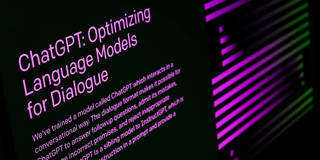By trying to predict the next word, ChatGPT has developed a nuanced understanding of context, grammar, and syntax and acquired capabilities that far exceeded its designers' initial expectations. There is a valuable lesson here for how development economists and policymakers approach the determinants of growth.
CAMBRIDGE – Spoiler alert: I am not going to talk about how ChatGPT responds when prompted about economic-development strategies. It basically regurgitates reasonable, but mediocre ideas that it has seen in its training set. But ChatGPT’s design, which has given it far greater capabilities than its creators anticipated, offers a valuable lesson for tackling the complexities of economic development.
For more than a decade, deep neural networks (DNNs) have outperformed all other artificial-intelligence technologies, driving significant advances in computer vision, speech recognition, and translation. The emergence of generative AI chatbots like ChatGPT continue this trend.
To learn, AI algorithms require training, which can be achieved through two main approaches: supervised and unsupervised learning. In supervised learning, humans provide the computer with a set of labeled pictures such as “dog,” “cat,” “hamburger,” “car,” and so on. The algorithm is then tested to see how well it predicts the labels associated with images it has not yet seen.

CAMBRIDGE – Spoiler alert: I am not going to talk about how ChatGPT responds when prompted about economic-development strategies. It basically regurgitates reasonable, but mediocre ideas that it has seen in its training set. But ChatGPT’s design, which has given it far greater capabilities than its creators anticipated, offers a valuable lesson for tackling the complexities of economic development.
For more than a decade, deep neural networks (DNNs) have outperformed all other artificial-intelligence technologies, driving significant advances in computer vision, speech recognition, and translation. The emergence of generative AI chatbots like ChatGPT continue this trend.
To learn, AI algorithms require training, which can be achieved through two main approaches: supervised and unsupervised learning. In supervised learning, humans provide the computer with a set of labeled pictures such as “dog,” “cat,” “hamburger,” “car,” and so on. The algorithm is then tested to see how well it predicts the labels associated with images it has not yet seen.